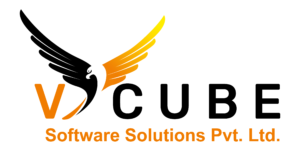TABLEAU INTERVIEW QUESTIONS PART 1
Interview Questions
1. Why Tableau?
- Tableau can analyze data stored in an on-premise database, a database, a data warehouse, a cloud service, or an Excel file. We can create data views and share
- them with colleagues, customers, and partners. We can use Tableau to combine it with other data, and we can automatically keep our data up to date.
2. How is the Context Filter different from other Filters?
- Whenever we build a Context Filter, Tableau will generate a temporary table for this Filter set, and additional Filters, such as cascade parameters, will be applied to the Context Filter data.
•Say we have a Context Filter on the countries of the United States and India. Tableau will create a temporary table for the data of these two countries, and if we have any other Filters, they will be applied to the data of these two countries. If we don’t have any Context Filters, each record will be checked for all Filters.
3. What are the five main products offered by Tableau?
- Tableau has five primary items to offer:
Tableau Desktop, Tableau Server, Tableau Online, Tableau Reader, and Tableau Public are all examples of Tableau products.
4. What is the latest version of Tableau Desktop?
- Tableau Desktop 2021.2 (as of June 23, 2021)
5. Compare QlikView with Tableau.
Criteria | Tableau | QlikView |
Data integration | Exceptional | Good |
Working with multidimensional data | Very Good | Good |
Support for PowerPoint | Available | Not available |
Visual Drilldown | Good | Very Good |
Scalability | Good | Limited by RAM |
6. What is data visualization?
- The approaches used to transmit data or information by encoding it as visual objects (e.g., points, lines, or bars) contained in graphics are referred to as data visualization.
7. What are Filters? How many types of Filters are there in Tableau?
- One of the most often asked Tableau developer interview questions is this. Have a firm grasp on this! A filter removes extraneous data and displays only the information we want. Tableau filters are classified into three types:
Quick Filter, Context Filter, and Data Source Filter
8. What is the disadvantage of Context Filters?
- The user does not commonly alter the Context Filter because changing it requires the database to be recomputed and the temporary table to be rewritten, reducing performance. Tableau creates a temporary table when we assign a dimension to context, which requires a reload each time the view is launched. The temporary table prepared for Excel, Access, and text data sources is in Access table format. We need authority to create a temporary table on our server for SQL Server, MySQL, and Oracle data sources. Temporary tables are not produced for a multidimensional data source or cubes, and Context Filters identify which Filters are independent and which are dependent.
9. What is aggregation and disaggregation of data?
- Eid Name Salary Department
1.java ABC 2000
2.bbc.net 3000
3. java 2500 Krishna
300 Madhu
5. Vamshi 3000 mainframe computers
1. ABC1000 evaluation
2. Tableau BBC 3000
3. www.krishna5000.net
4. Madhu 7000 evaluation
tableau vans 9000
Mainframes 1 ABC 11000
BBC 13000 testing 2
Three Krishna 15000 java
nte 4 Madhu 17000
5 19000.vamshi.net
Aggregation: To provide aggregate data, sum/average wage by each employee
Drag the name to the column and salary to the rows to get the total (salary) of every employee.
Change the measure type to Avg.
Select a salary option: Select ‘Avg’ as the measure type.
Disaggregation: The display of each transaction.
When we look at the aggregated data in the views above, we can see that each
10. What makes Tableau stand out?
- This is again another question that may be found on any Tableau interview questions and answers blog. This response will provide you with a clear idea. Tableau stands out for several reasons:
• For starters, most BI tools are expensive, but Tableau has a free offering (Tableau Public) as well as a very popular (also free) academic distribution. • Tableau is well recognized by firms such as Forrester Research as one of the most easy-to-use and agile products currently available. On the other hand, Tableau, unlike some other BI tools, is not a complete technology stack; it is mostly useful for visualization and analytics. Other Tools, in addition to Tableau, will be required for larger corporate data ETL, maintenance, and analysis.
11. What is the benefit of the Tableau Extract file over the live connection?
- Extract may be used everywhere without requiring a connection, and we can create our visualizations without needing to connect to a database.
12. What is the difference between file extensions? Please explain.
- The file extension. represents a live connection, pointing to the data source. The user who receives the. file must have authorization to access the specified data source, and no data is supplied.
.on the other hand, keeps the data offline as a package or zip-like file, eliminating the requirement for permissions.
13. What is the maximum number of tables we can join in Tableau?
- We can only join a maximum of 32 tables; more than 32 tables cannot be combined.
14. How do we do testing in Tableau?
- We can’t perform testing in Tableau. It is a data visualization software.
15. How do we use parameters in Tableau?
- We can use parameters with filters, calculated fields, actions, measure-swaps, changing views, and auto-updates
Upskill & Reskill For Your Future With Our Software Courses
Tableau Coaching in Hyderabad

Quick Links
- Home
- About Us
- Courses
- Contact Us
Other Pages
Contact Info
- 2nd Floor Above Raymond’s Clothing Store KPHB, Phase-1, Kukatpally, Hyderabad
- +91 7675070124, +91 9059456742
- contact@vcubegroup.com
